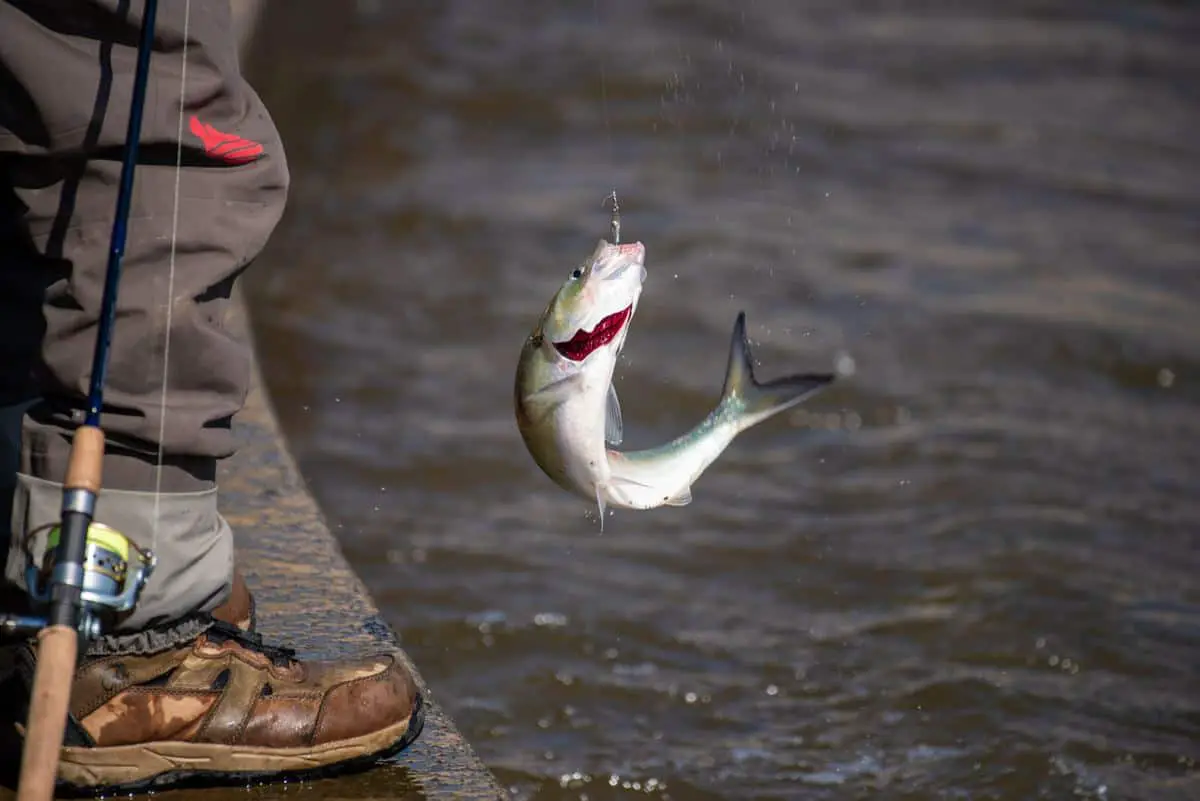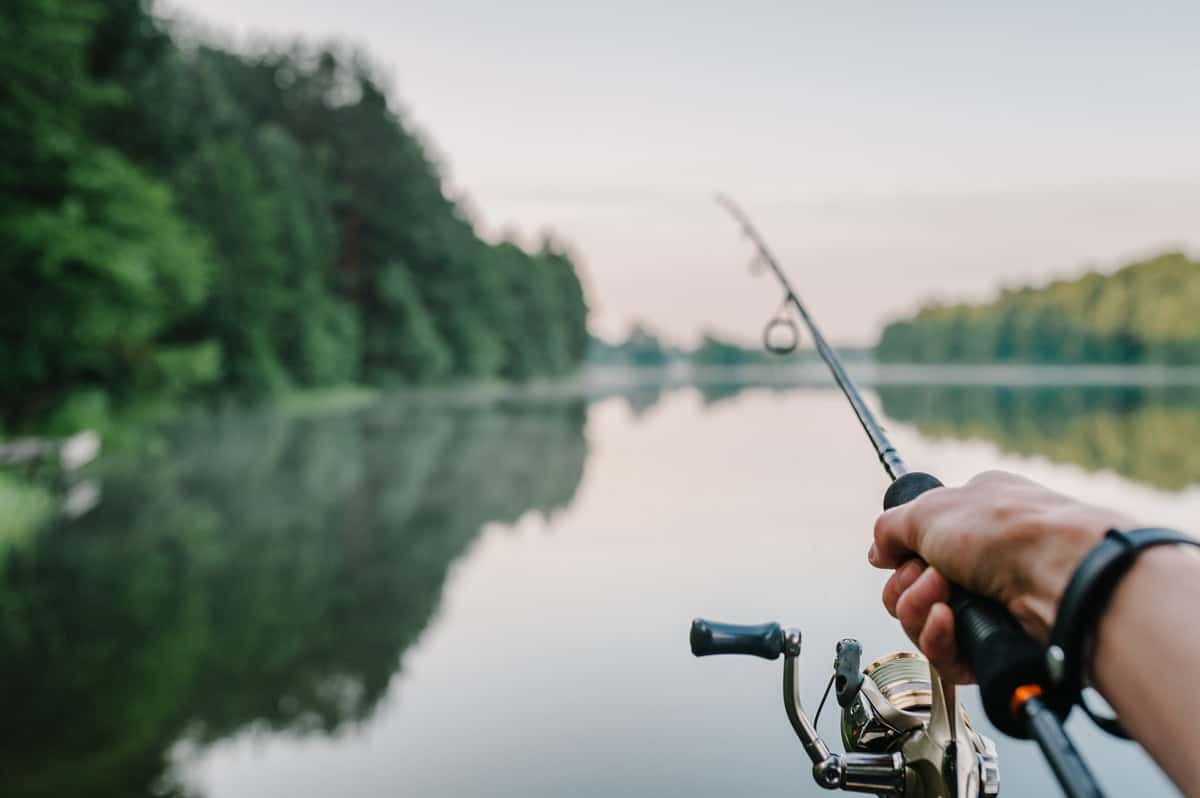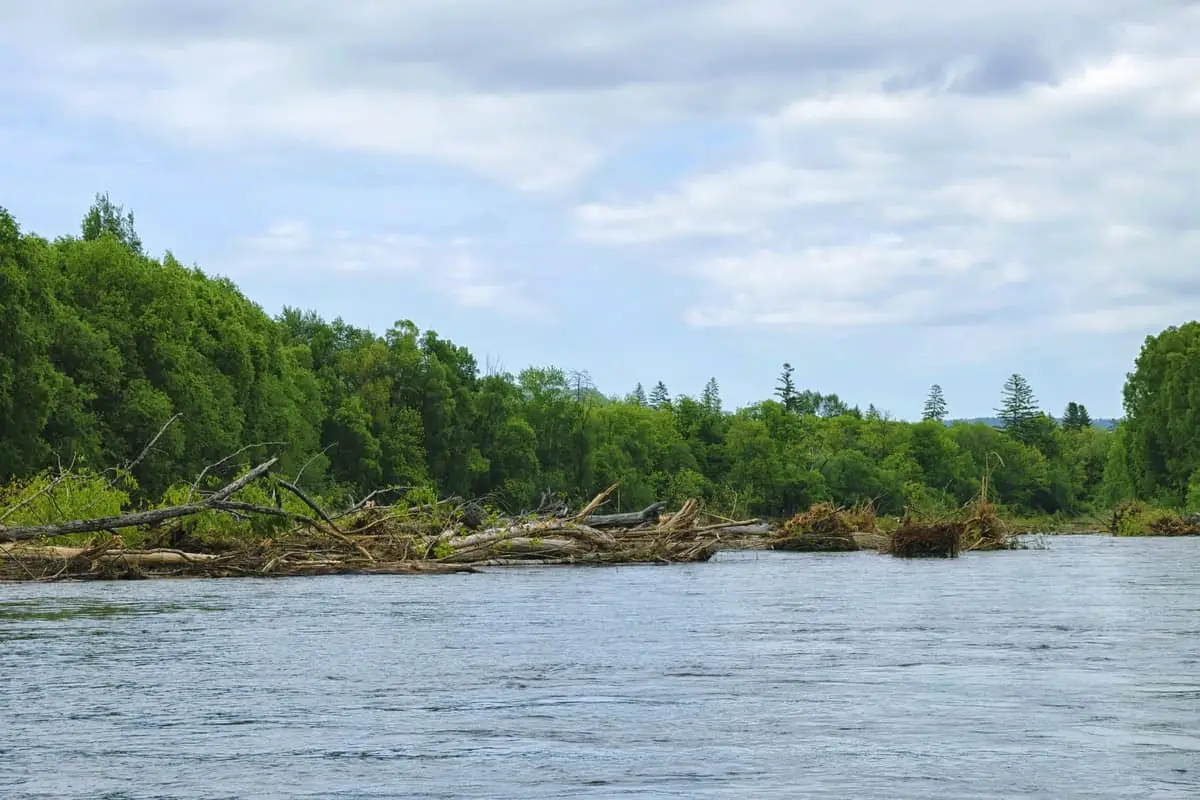
Fishing is supposed to be a relaxing pastime, but what is not relaxing is trying to figure out what type of fish you can catch using a certain line test. There is nothing worse than hooking onto a fish too large for your fishing line, and it just keeps snapping on you.
What type of fish can you catch using a 6 lb fishing line?
| Freshwater Fish | Saltwater Fish |
|---|---|
| Yellow Perch | Pacific Staghorn Sculpin |
| Black Crappie | California Corbina |
| Sunfish Crappie | Herring |
| Bluegill Crappie | Shiner Perch |
| Redear Crappie | |
| Green Crappie | |
| Redbreast Crappie | |
| Warmouth Crappie | |
| Pumpkinseed Crappie | |
| Shad | |
| Smallmouth Bass | |
| White Bass | |
| Peamouth Chub |
Just understanding what fishing line strength you need won’t be enough to catch these fish effectively. You need to know many little things regarding your tackle to improve your chances of catching these fish.
So without any further ado, let start talking tackle!

What Type Of Fishing Line Should You Use?
When fishing with a 6 lb fishing line, you are generally using Ultralight to Light tackle. If you’ve done any research around “how to select a fishing line type,” it has become more complicated than what it needs to be.
Pick a high-quality 6 lb monofilament fishing line. Monofilament is a good and well-balanced fishing line suited for many different types of fishing that you will encounter.
If you’re looking for a quick recommendation of a good quality monofilament fishing line, I suggest you check out the [sherpa id=”d7f193d8″].
If you’re new to fishing and want to learn more about monofilament fishing lines, check out my guide here.
As great as monofilament fishing is, there are some limitations that you should be aware of. So let us dive deeper into some of the limitations of monofilament fishing lines.
Pros of Monofilament Fishing Line
- Abrasion resistance against underwater objects
- Line stretch which acts as a shock absorber minimzing the chances of your line from snapping.
- Great knot strength
- Slower sinking rate.
- Great for casting
- Visibility underwater is ok but comes harder to see the deeper you go. Picking the right colour will also help with visibility.
- Can be used in Freshwater and Saltwater
Cons of Monofilament Fishing Line
- Line memory (line curls or twisting) which can affect casting and sensitivity to feel bites.
- Absorbs water while fishing which can slightly change how the line behaves in the water and reduces line strength by 10% when fully saturated.
- Sunlight (UV) exposure will slowly degrade the fishing line over time.
Want to understand better which fishing lines will sink or float? Then check out my post here to learn more.
Why I Don’t Recommend Braided Fishing Line For Beginners
If you’ve been researching fishing lines, you might have come across braided fishing lines before and heard how many experienced anglers recommend them. I have nothing against braided fishing lines, they are truly a great fishing line to use, but I have my reservations.
My main issue with braided fishing lines is that they are more difficult to handle and are less forgiving than monofilament, which can create some headaches for novice anglers.
What exactly makes braided fishing lines so difficult to handle? Well glad that you asked; here are my biggest concerns when using braided fishing lines:
- Difficult to learn how to tie knots. Because of the line diameter being much smaller than monofilament can make it harder to tie a knot if you’re just starting out with fishing. Plus the outside of braided lines are super smooth which is another contributing factor that makes tying knots harder.
A solution can be using a stronger braided line to get the same or similar line diameter as a 6 lb monofilament to make tying knots a bit easier but these lines are much more expensive. I don’t think its econmically smart to purchase braid just for this purpose unless you’re serious behind fishing. - Costs way more than monofilment. Whenever you purchase braided lines there is always a cost increase which would be fine if you’re a serious angler. But if you’re just starting out then I would not recommend paying the increased cost unless you’re sure this is something you want to do.
- Braided lines can cut your hands if you’re not careful. Since braided lines are much thinner in diameter than braid for the same line test it can potentially cut your hands. The thinner line can act a bit like a cut which can cut into your hands when casting, pulling on a snagged line, or grabbing the line trying to land a thrashing fish.
If you want to learn more about how fishing lines can potentially cut your hands if you’re not careful, then check out my post on hand safety when handling fishing lines.

Do You Need A Leader Line?
I can see this topic being up for debate depending on who you talk to. Since you’re fishing for really small fish, the chances of getting snagged on something is low, and the chances of a fish breaking your line are pretty small. On the other hand, there is always a risk that you could snag onto something when fishing and the point of a leader is to protect your main line from breaking.
I lean towards the side of needing a leader line. The effort it takes to prepare a leader line is fairly low, and it makes for good practice, especially if you’re a novice.
“It’s better to have it and not need it than need it
and not have it.”
– Some Wise Old Person
If you’re not sure what the exact purpose of a leader line is, check out my post on why you would want a leader line for more details.
If you’re stuck with determining how strong your leader line should be, you might want to check out this post for more information.
If you’re having issues determining your leader length, check out this post around how long your leader should be, which could help you answer some of your questions.
Should You Use A Fluorocarbon Line For My Leader To Reduce Line Visibility?
Bait presentation is key when it comes to trying to entice a fish to go after your bait. This is why many experienced anglers emphasize practicing giving your bait action, making it behave more life-like. But what about the fact fish that fish can potentially see your fishing line?
How visible your fishing line is underwater does play a role in how presentable your bait is to fish, but how much of a factor it plays is hard to say since it depends on a lot of factors such as:
- Type of Fish
- Fishing Depth
- Water Clarity
- Weather
- The fish’s mood in general
I have used monofilament as a leader line for years.; In fact, I still do. Your ability to give the bait the right amount of action is more important than how visible your fishing line is underwater. So I don’t believe you need to use a fluorocarbon line is required.
This helps force beginners to focus on the techniques required to entice a fish to bite. Once you get the technique down, then using a fluorocarbon line will make things better.
Stop trying to optimize everything. It’s more important to just start fishing and practice.
– Brian
Fluorocarbon lines are harder to see underwater than monofilament, making them a great choice for leader lines. However, using a fluorocarbon line will change the action of your bait a bit. If you don’t have the technique down, then using a fluorocarbon line won’t help you and will be a waste of money.
But if you’re looking to experiment with a good fluorocarbon line for a good price, check out the [sherpa id=”bfa13ad7″].
Should You Use A Swivel?
The main reason you would want to use a swivel is to prevent your line from twisting on itself in the water. This is known as “line twist.”
If your fishing line is experiencing line twist, you can see the fishing line wanting to curl on itself as it comes off the reel. Besides having your fishing line look odd, this curling action will affect how you fish.
- Reduces casting distance
- Reduces line sensitivity making it harder to feel bites
- Changes how your bait moves underwater
Several different factors can cause a fishing line to develop line twist, such as:
- Reeling in spinning lures
- Water currents
- Reeling in fish as it moves around
This is another debatable topic when fishing for smaller fish among anglers. I lean towards using a properly sized swivel to prevent line twist from occurring in the first place.
However, if you pick a swivel that is too large, then the swivel’s weight will act like a small sinker which is not what you want. If you’re looking for a recommendation, I recommend using a #12 [sherpa id=”dbd4e62f”] and tie it between your main fishing line and your leader.
Once your fishing line develops a line twist, it can be challenging to remove the twist out of the line completely. So it’s better to try to prevent it from occurring in the first place.
If your fishing line already has some line twist, or you want to read more about how to remove it if you develop it, give my post on how to remove line twist a read.
What Hook Size Should You Use?
Picking the right size hook is important and tends to get not enough attention from new anglers. If you pick a too small hook, the hook could break when fighting a fish or make it difficult to get a good hookset. Imagine every time you pull up on the rod to hook the fish; the hook will pop out of its mouth. But too large of a hook will not fit inside the fish’s mouth, making it nearly impossible to hook a fish.
Here are my recommended hook sizes for each type of fish:
| Freshwater Fish | Hook Size |
|---|---|
| Yellow Perch | #2 – #6 |
| Black Crappie | #8 – #12 |
| Sunfish Crappie | #8 – #12 |
| Bluegill Crappie | #8 – #12 |
| Redear Crappie | #8 – #12 |
| Green Crappie | #8 – #12 |
| Redbreast Crappie | #8 – #12 |
| Warmouth Crappie | #8 – #12 |
| Pumpkinseed Crappie | #8 – #12 |
| Shad | #1 – 1/0 |
| Smallmouth Bass | #2 – 4/0 |
| White Bass | 3/0 – 4/0 |
| Peamouth Chub | #10 – #12 |
| Saltwater Fish | Hook Size |
|---|---|
| Pacific Staghorn Sculpin | 1/0 – 3/0 |
| California Corbina | #5 – #1/0 |
| Herring | #8 – #12 |
| Shiner Perch | #8 – #12 |
As you can see, there is quite a range of hook sizes that you can use for the fish. Which size you should use depends on how aggressive the fish are to feed and how big their mouths are. This is why I recommend anglers to get a variety pack with multiple sizes in a single package.
For the smaller hooks between #12 – #3, I recommend you check these [sherpa id=”3373fa46″] out. For the larger hooks between 1/0 – 6/0, I recommend you check these [sherpa id=”92daf6c4″] out.
What Type Of Rod and Reel Should You Use
When it comes to picking the right type of rod and reel, there are many opinions out there, including mine. There are two main factors that you need to consider when picking a rod and reel to use, which are:
- The Specifications
- How it feels when you fish with it
Picking a rod and reel that FEELS right takes time to experiment with different rod and reel combinations. Once you’re more experienced, you will better understand what feels more right for you out of the gate. However, if you’re starting and have no clue what different rods and reels feel like, you need to fall back on the recommended technical specifications required for each fish to act as a starting point.
| Freshwater Fish | Rod Length (ft) | Rod Power | Reel Size |
|---|---|---|---|
| Yellow Perch | 6 – 7.5 | Ultralight Light | Spinning Reel 1000 (10) 2000 (20) 2500 (25) 3000 (30) |
| Black Crappie | 6 – 7.5 | Ultralight Light | Spinning Reel 1000 (10) 2000 (20) 2500 (25) |
| Sunfish Crappie | 6 – 7.5 | Ultralight Light | Spinning Reel 1000 (10) 2000 (20) 2500 (25) |
| Bluegill Crappie | 6 – 7.5 | Ultralight Light | Spinning Reel 1000 (10) 2000 (20) 2500 (25) |
| Redear Crappie | 6 – 7.5 | Ultralight Light | Spinning Reel 1000 (10) 2000 (20) 2500 (25) |
| Green Crappie | 6 – 7.5 | Ultralight Light | Spinning Reel 1000 (10) 2000 (20) 2500 (25) |
| Redbreast Crappie | 6 – 7.5 | Ultralight Light | Spinning Reel 1000 (10) 2000 (20) 2500 (25) |
| Warmouth Crappie | 6 – 7.5 | Ultralight Light | Spinning Reel 1000 (10) 2000 (20) 2500 (25) |
| Pumpkinseed Crappie | 6 – 7.5 | Ultralight Light | Spinning Reel 1000 (10) 2000 (20) 2500 (25) |
| Shad | 6 – 7.5 | Light Light Medium Medium | Spinning Reel 2000 (20) 2500 (25) |
| Smallmouth Bass | 6 – 8 | Light Medium Medium | Spinning Reel 2000 (20) 2500 (25) Baitcasters 50 70 |
| White Bass | 6 – 7.5 | Ultralight Light | Spinning Reel 1000 (10) 2000 (20) |
| Peamouth Chub | 6 – 8 | Ultralight Light | Spinning Reel 1000 (10) 2000 (20) |
| Saltwater Fish | Rod Length (ft) | Rod Power | Reel Size |
|---|---|---|---|
| Pacific Staghorn Sculpin | 6 – 7.5 | Ultralight Light | Spinning Reel 1000 (10) 2000 (20) 2500 (25) |
| Califonia Corbina | 6 – 7.5 | Light | Spinning Reel 2000 (20) 2500 (25) |
| Herring | 6 – 7.5 | Ultralight Light | Spinning Reel 1000 (10) 2000 (20) 2500 (25) |
| Shiner Perch | 6 – 7.5 | Ultralight Light | Spinning Reel 1000 (10) 2000 (20) 2500 (25) |
| Pacific Staghorn Sculpin | 6 – 7.5 | Light | Spinning Reel 2000 (20) 2500 (25) |
Time To Get Outside And Have Some Fun!
The key here is to pick up some gear and hit the water fishing. You’ll learn what works best for you as you start fishing. When it comes to equipment and tackle, most of it is based on personal preference.
If you picked a rod or reel that does not work well for you, try returning it to the shop for credit. In the worst-case scenario, you can try selling it online – You would be surprised what you can sell online in your local classifies.
So there is no risk with just making a decision and going with it. So what are you waiting for?
If you’re interested in learning what you can catch using a 4 lb line, then check out my post on what fish you can catch using a 4 lb line for more.
If you’re interested in learning what you can catch using an 8 lb line, then check out my post on what fish you can catch using an 8 lb line for more.
Happy Fishing and Tight Lines!
